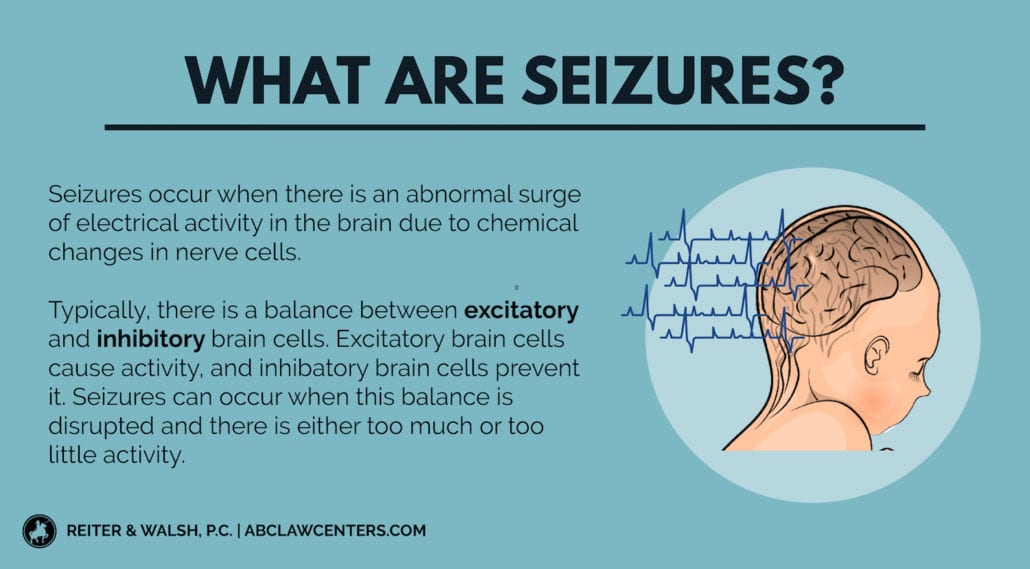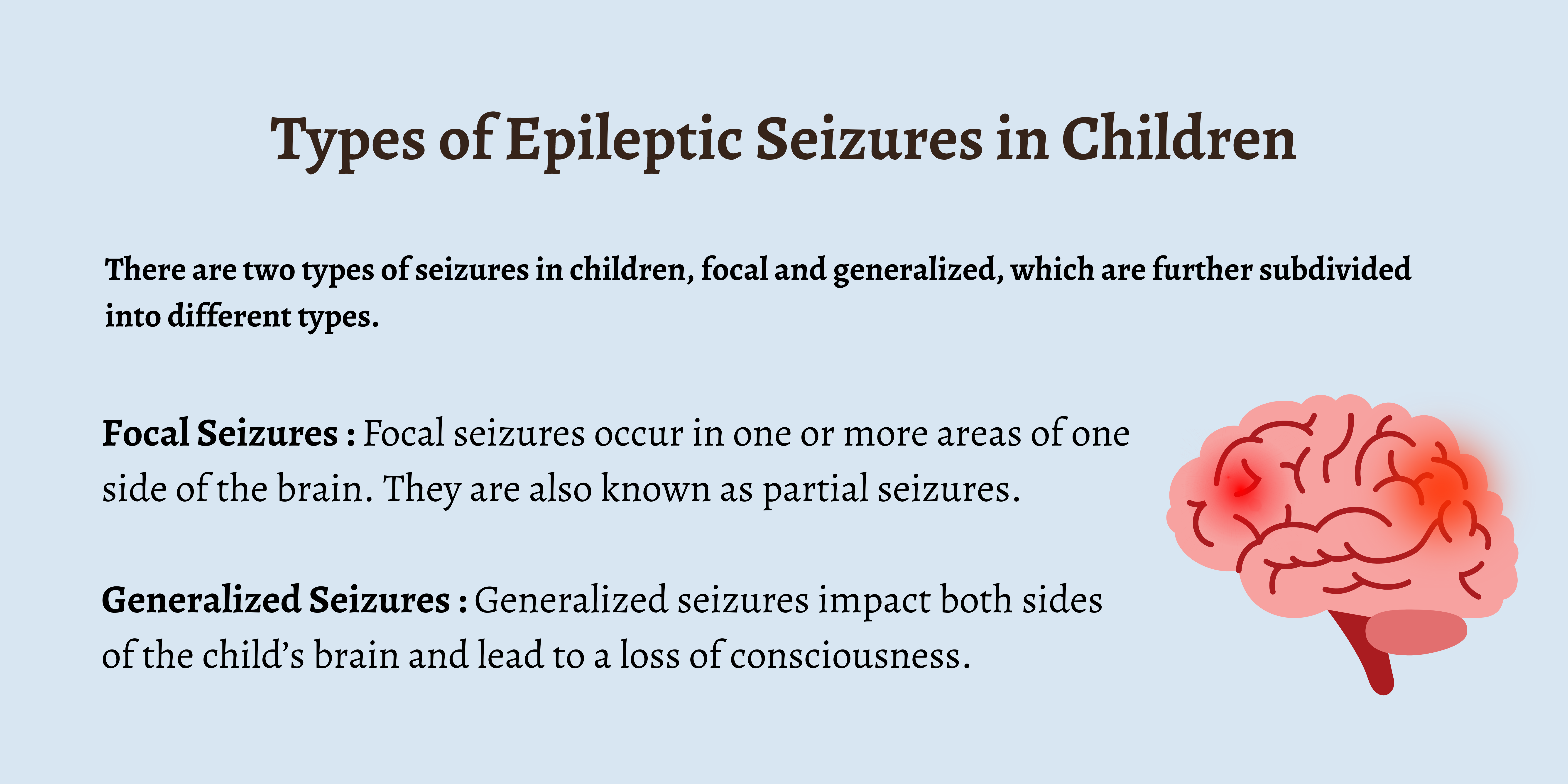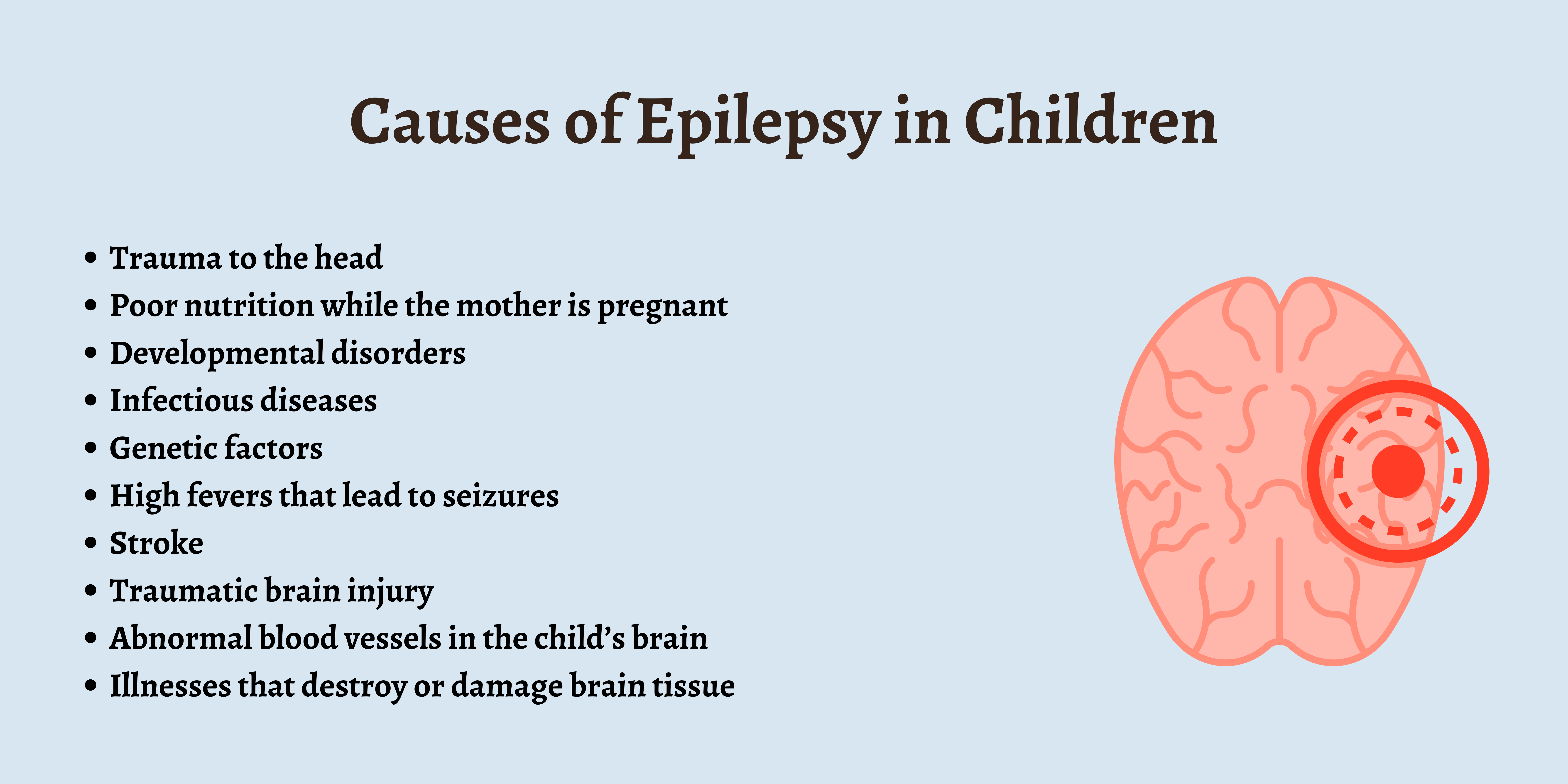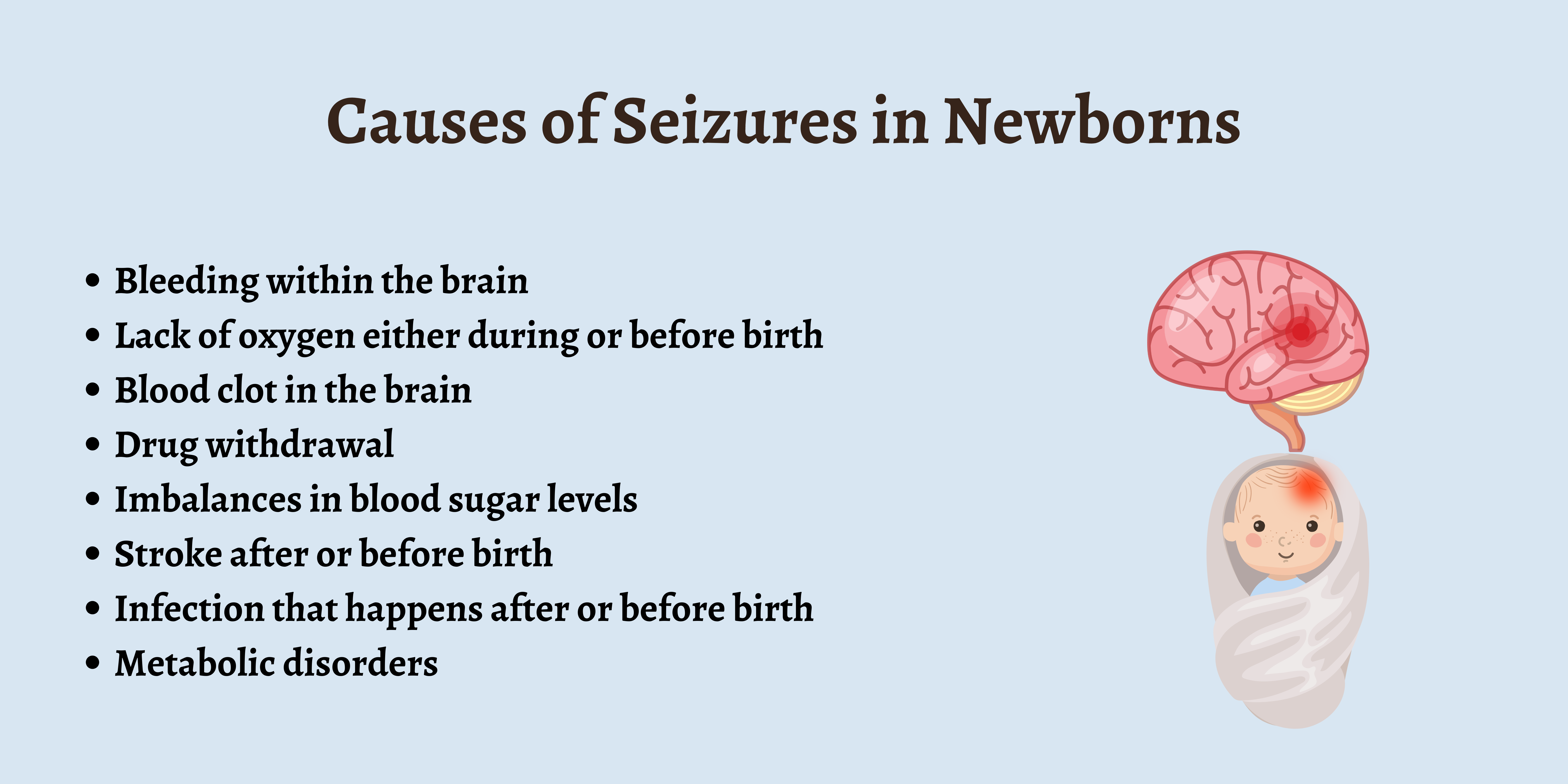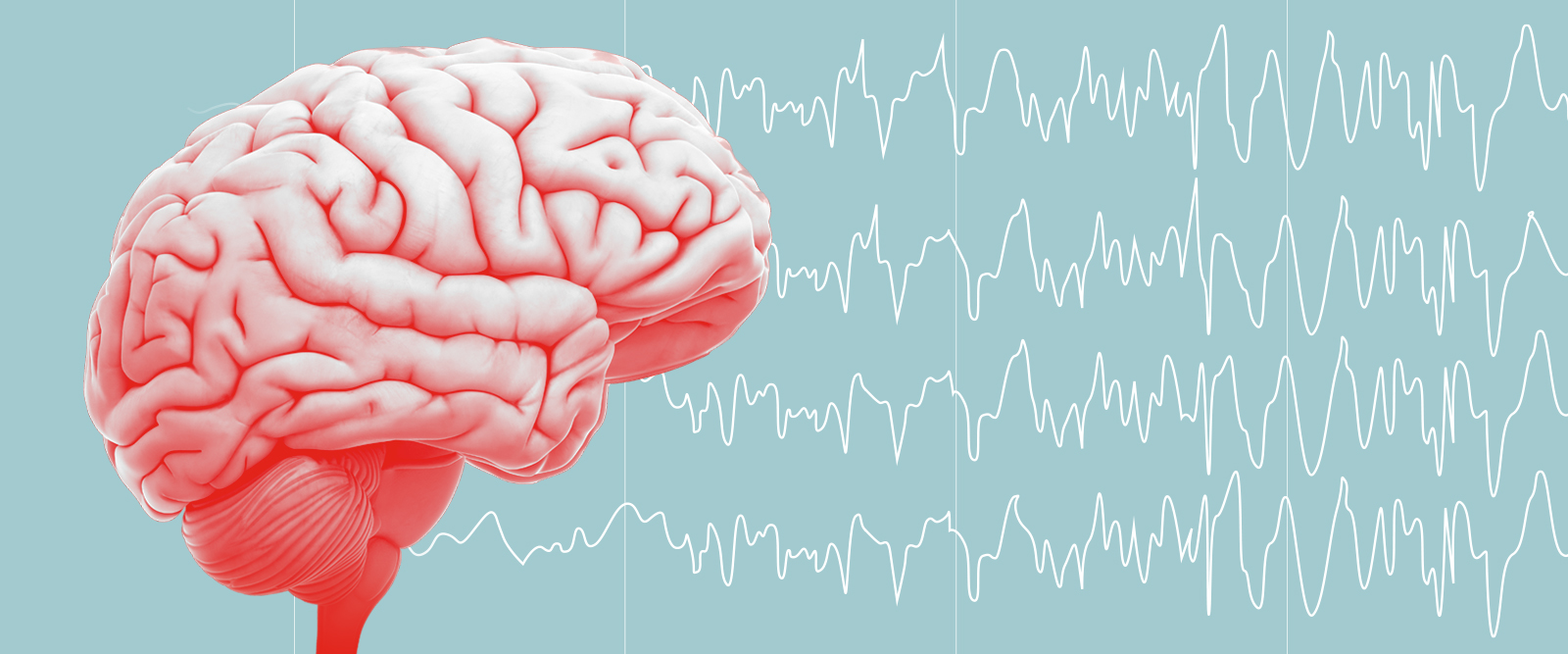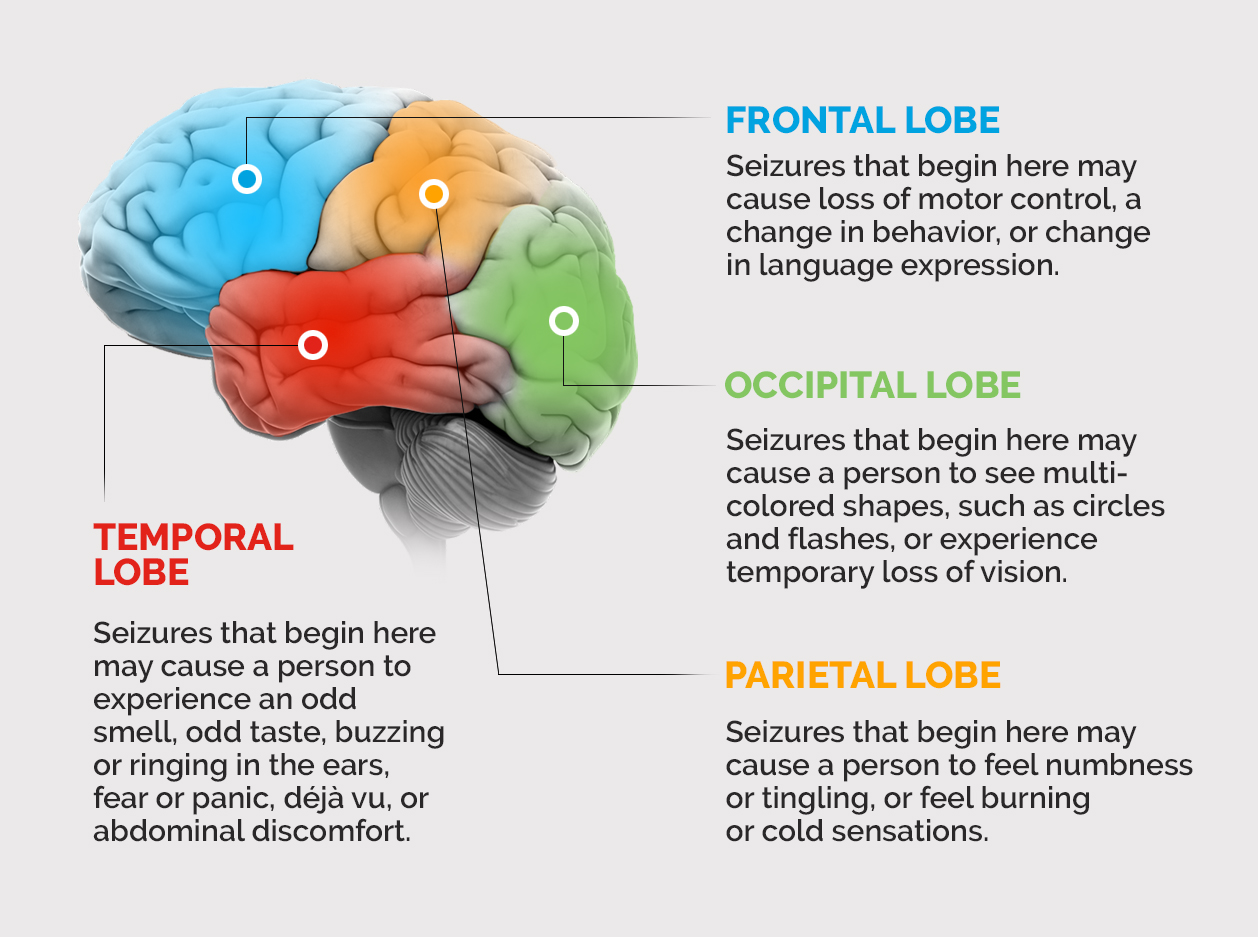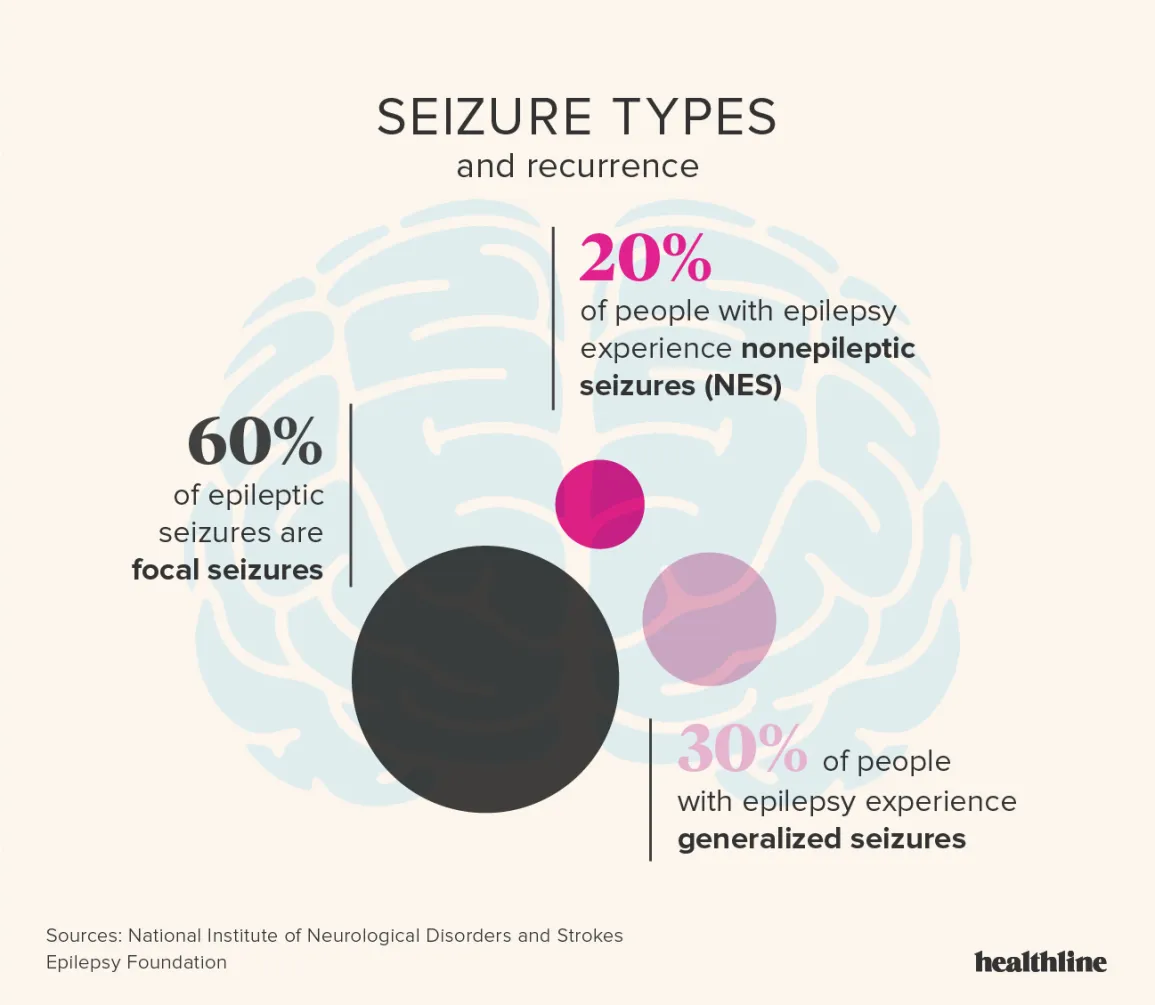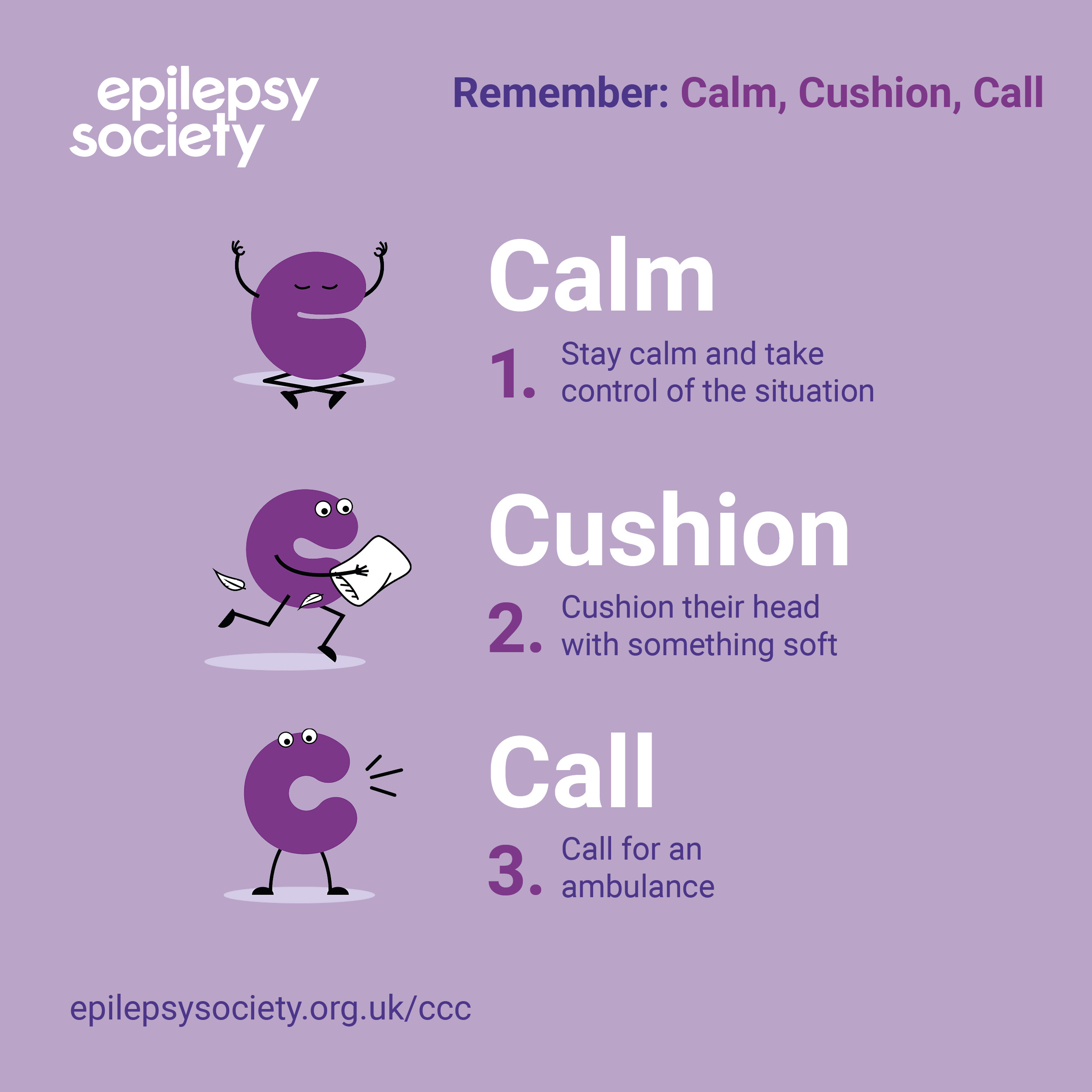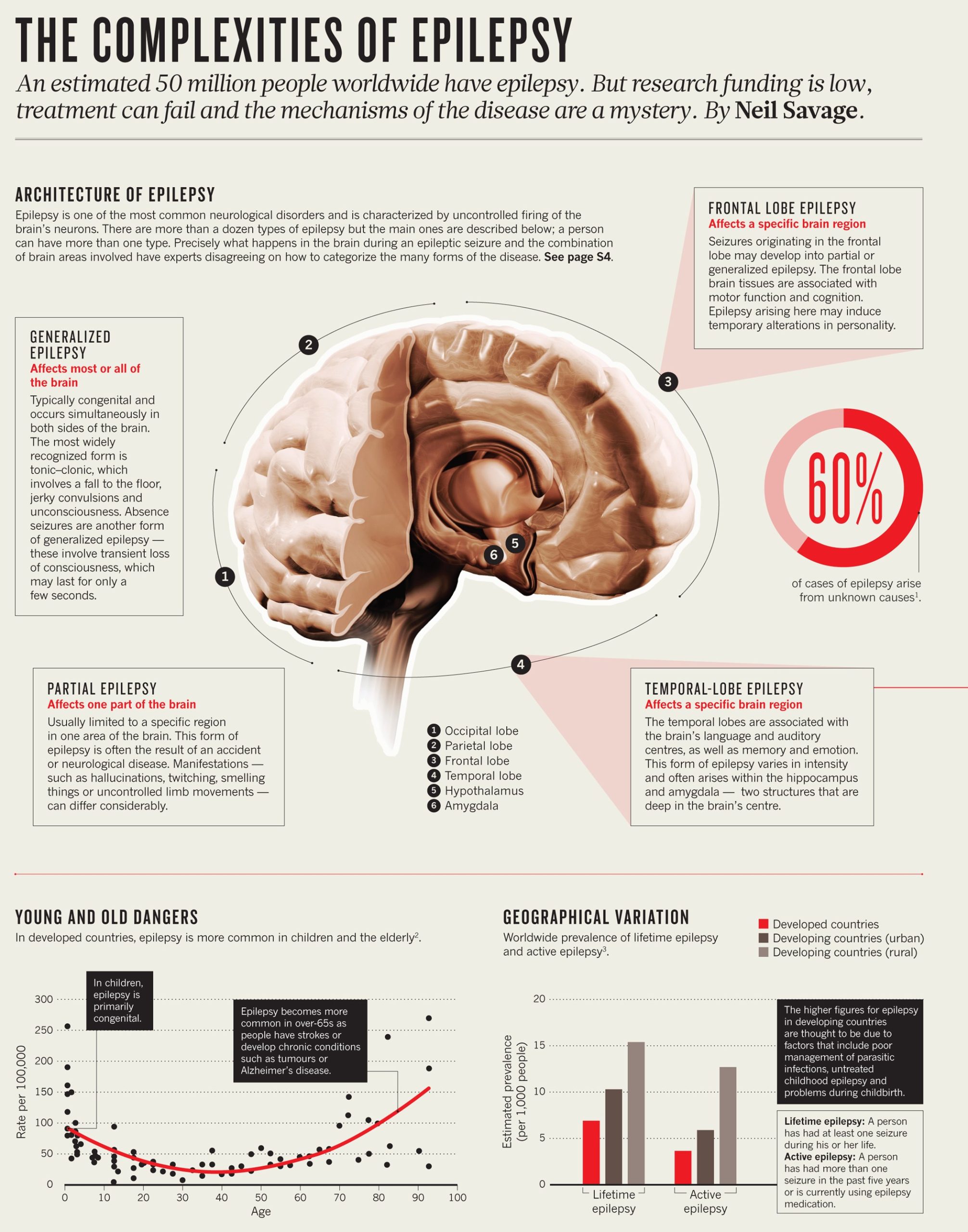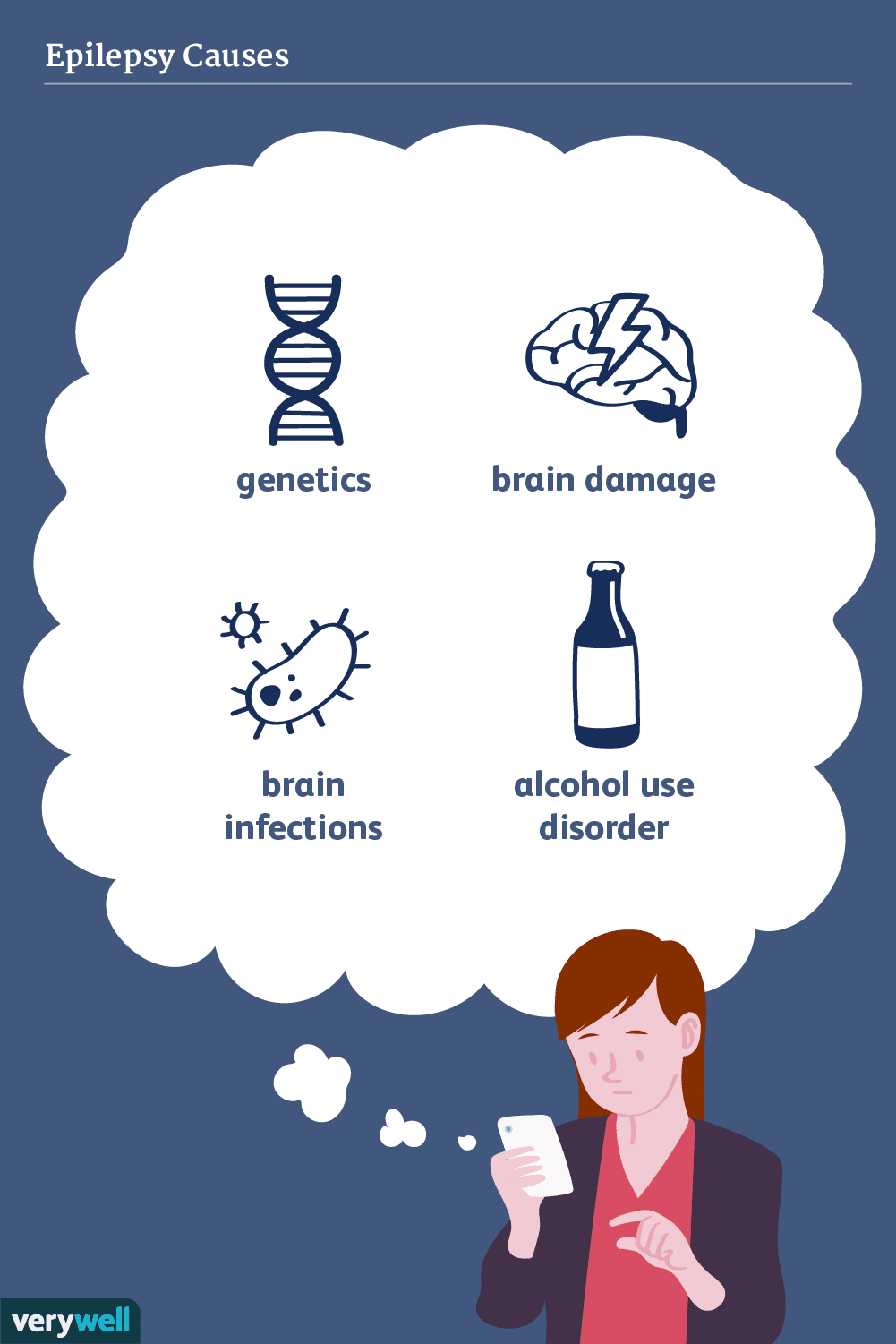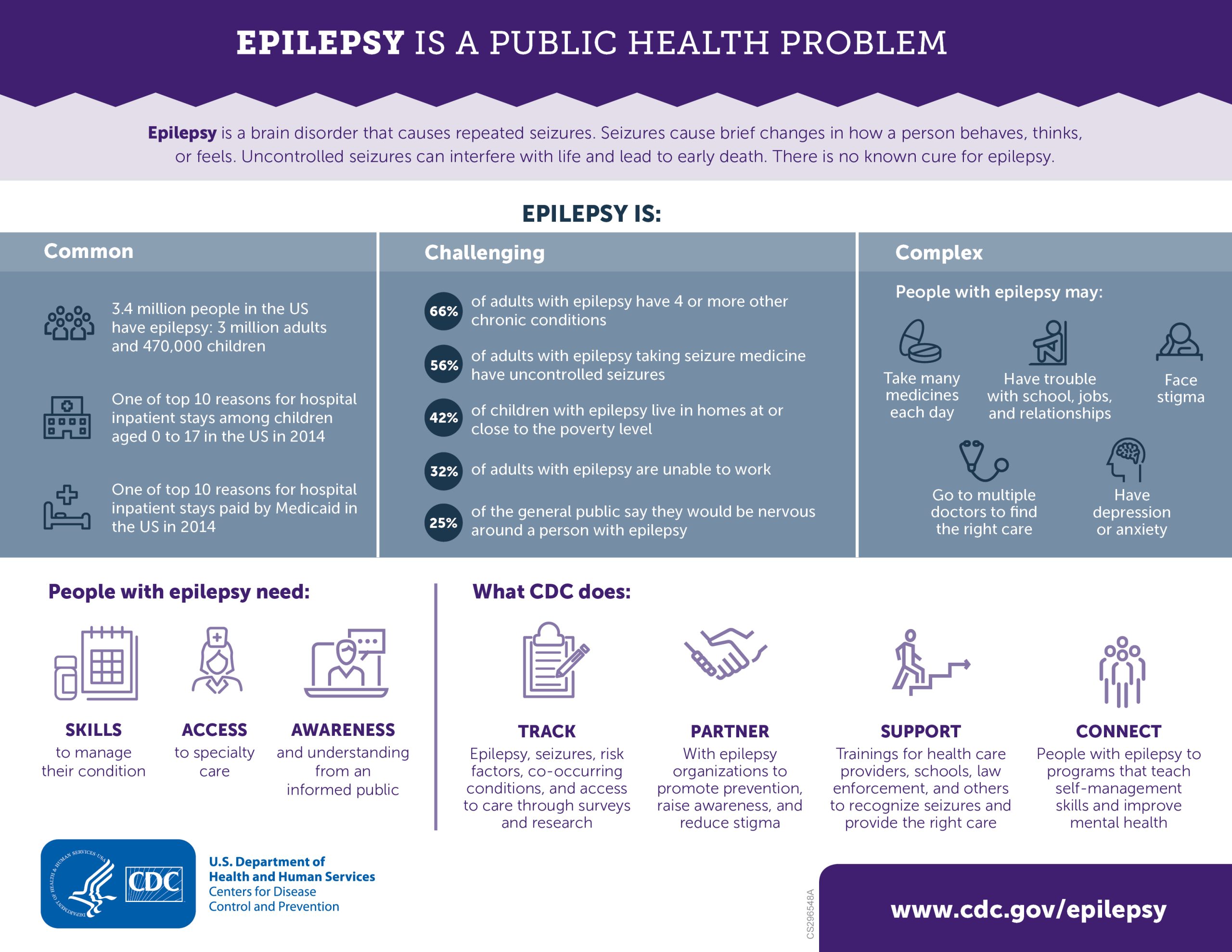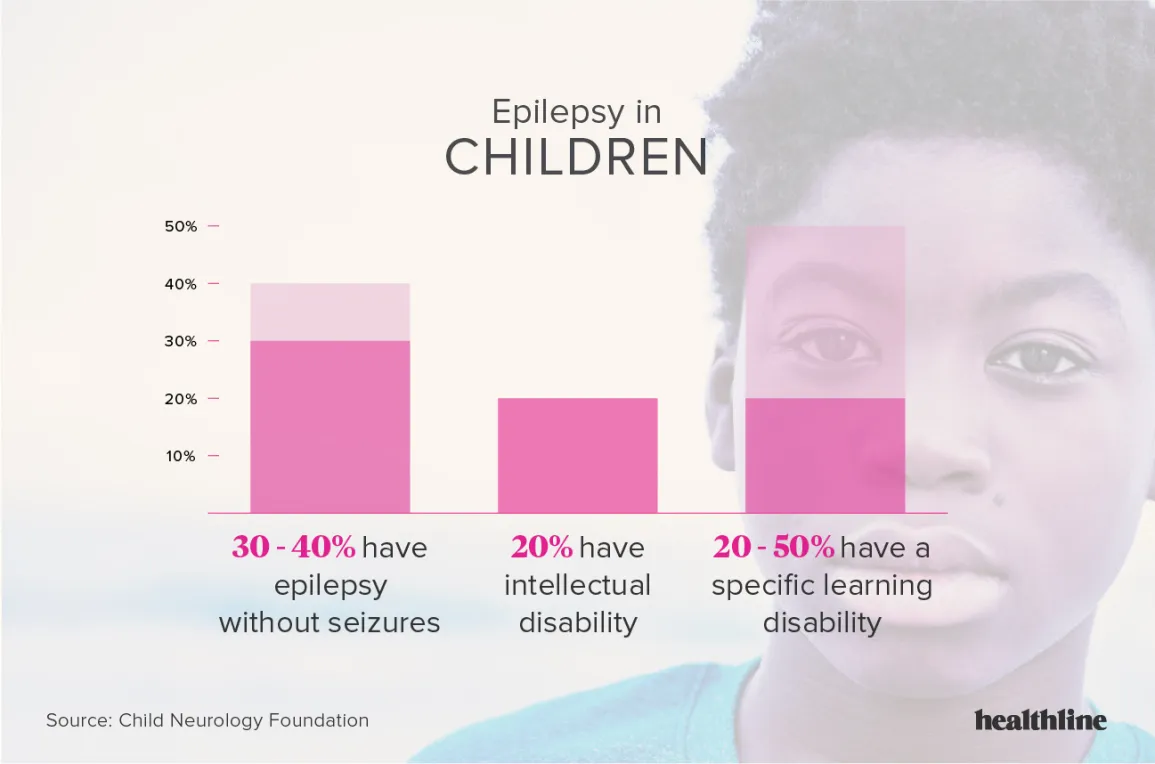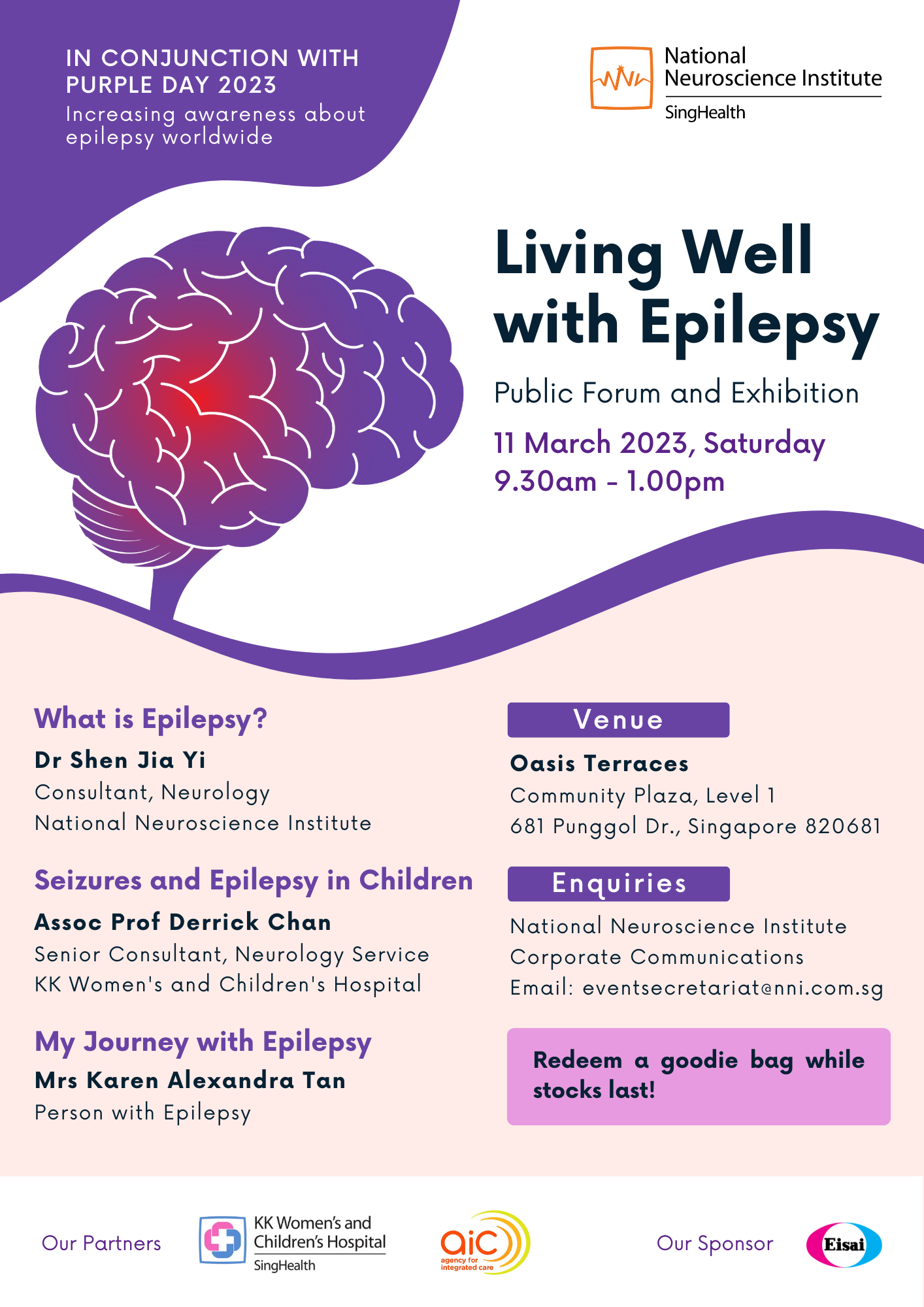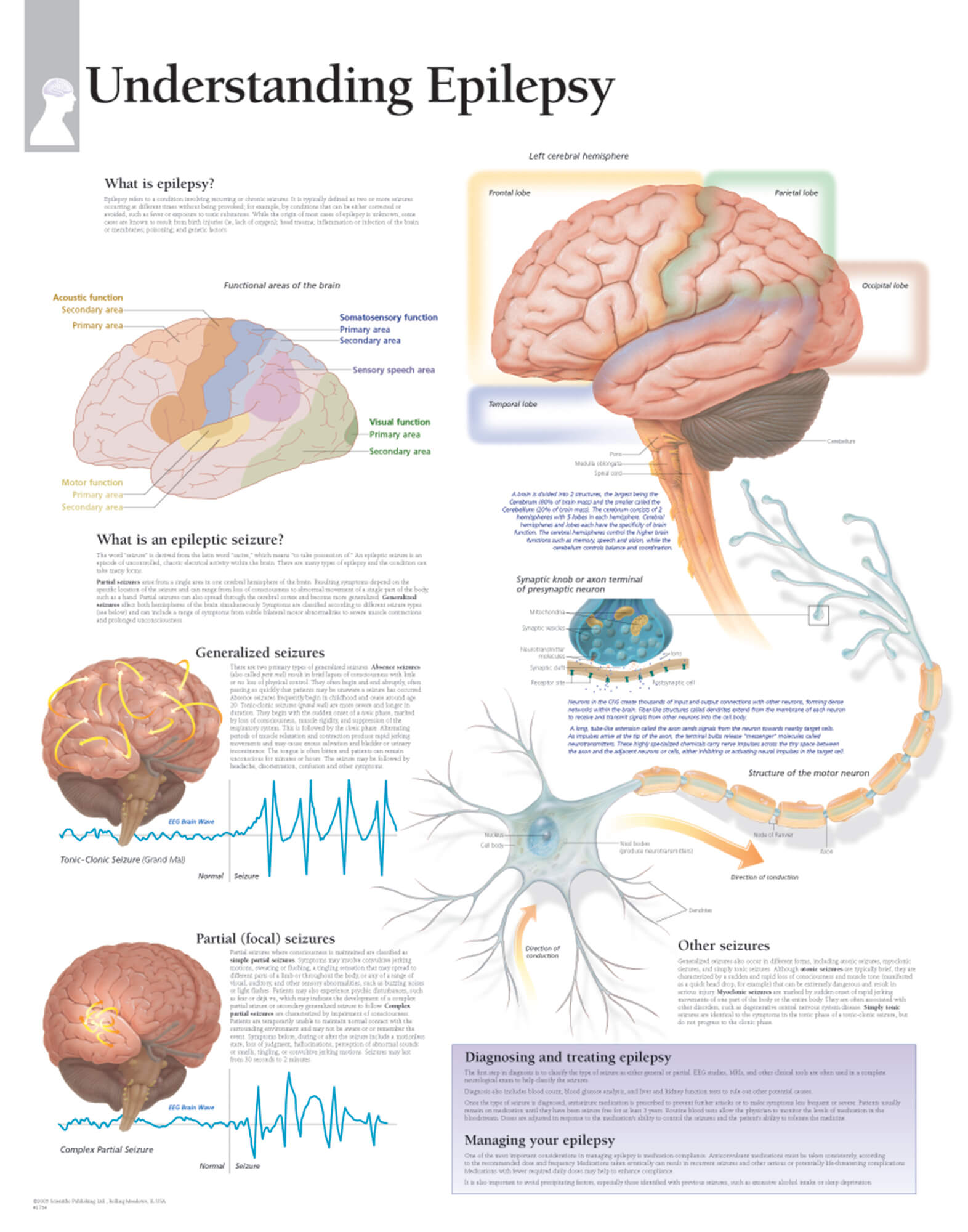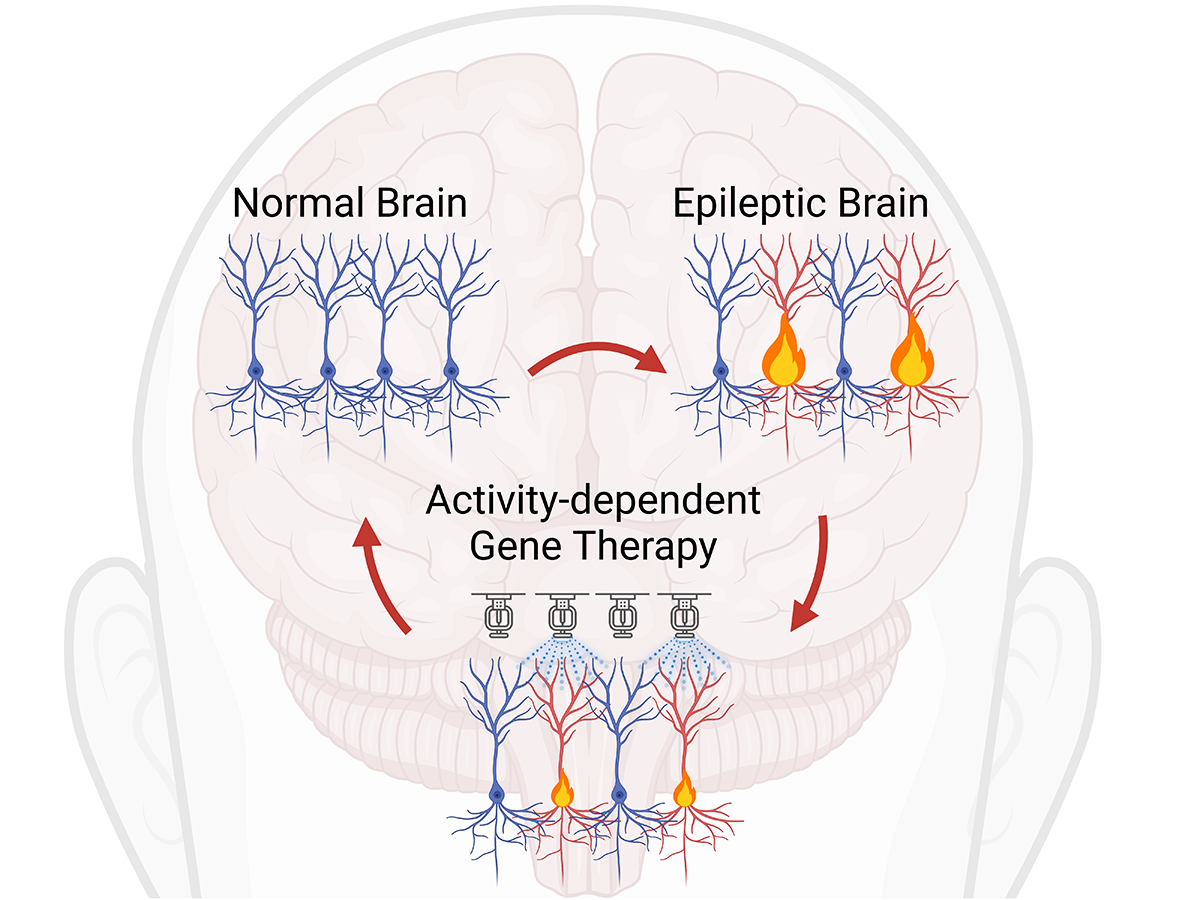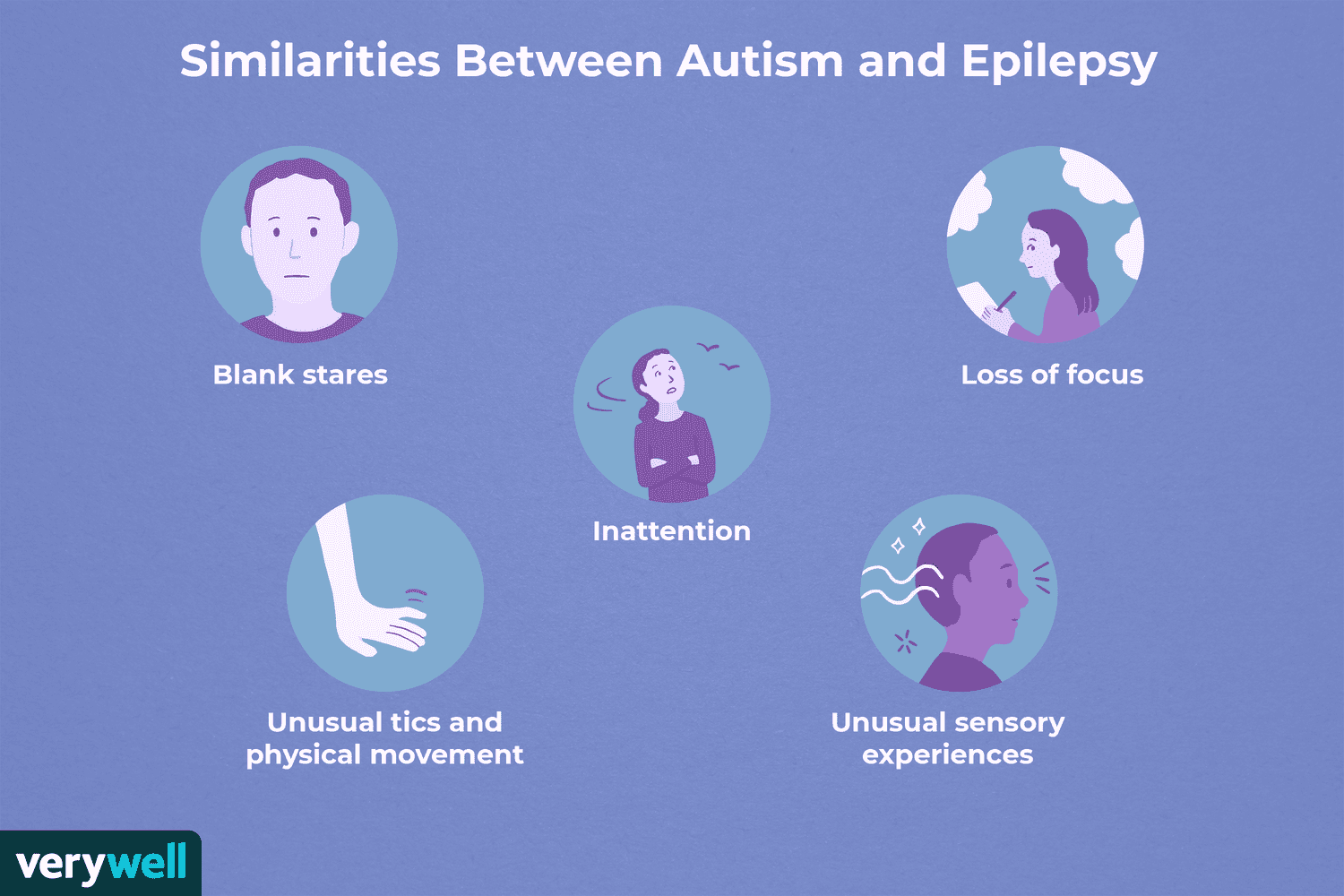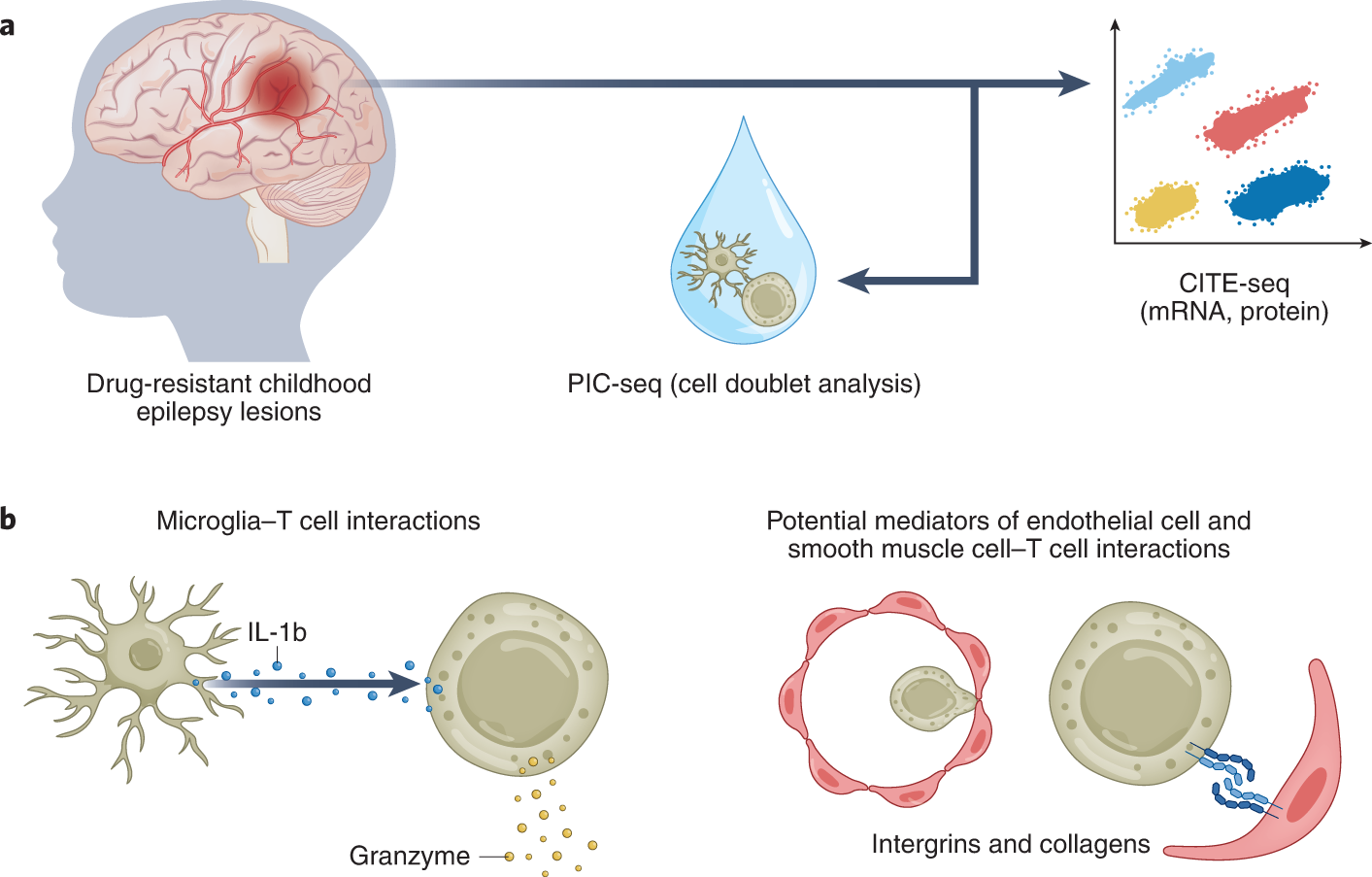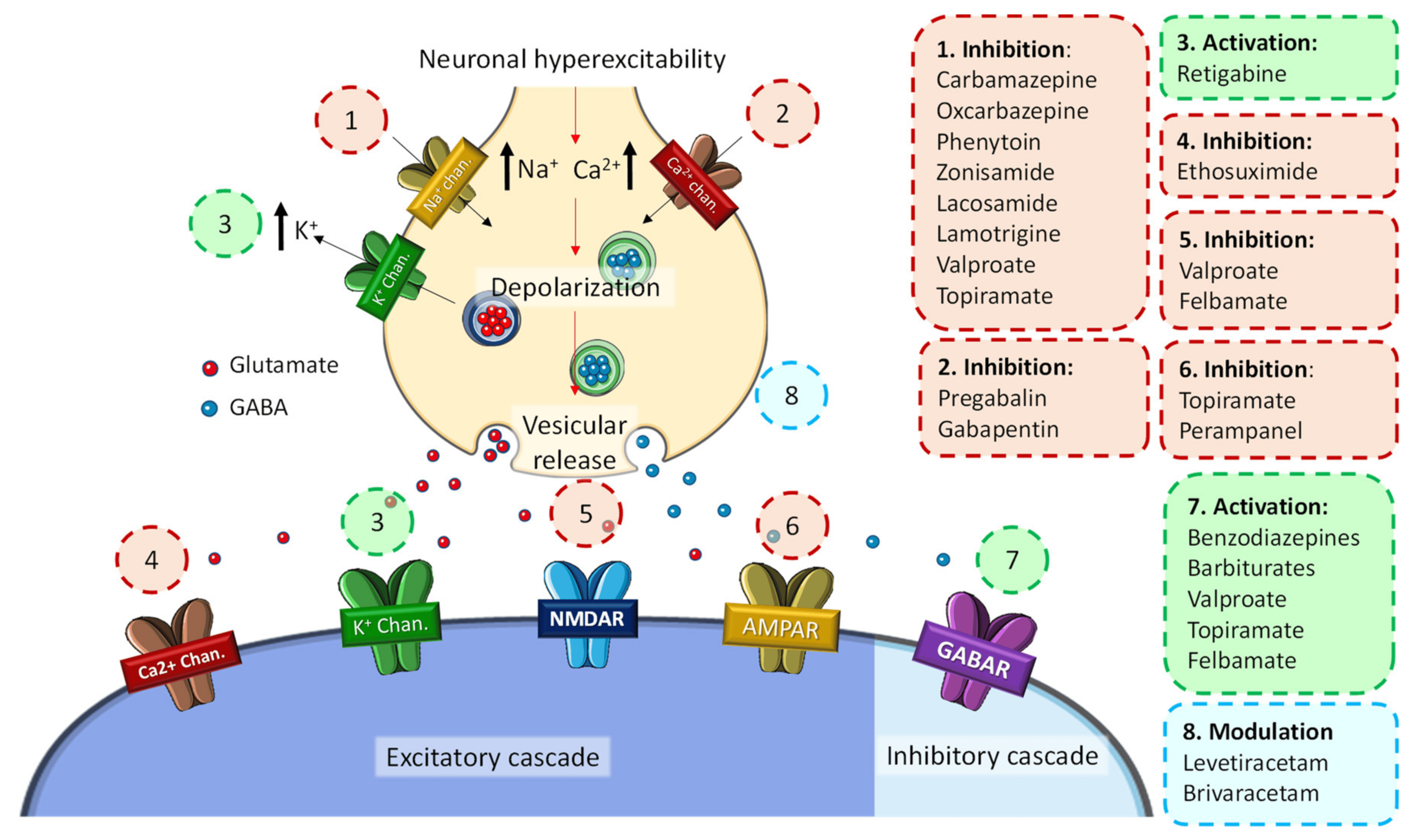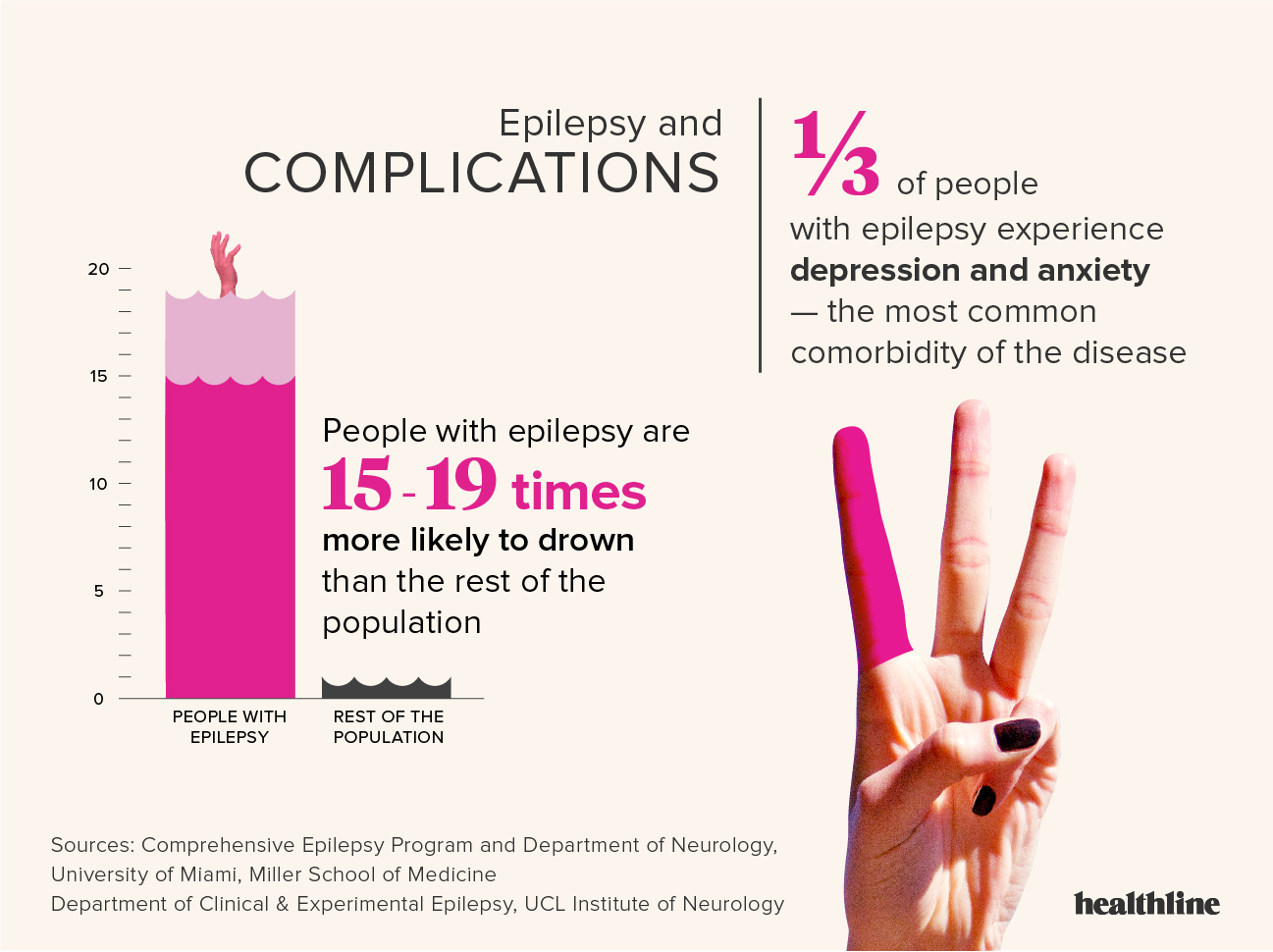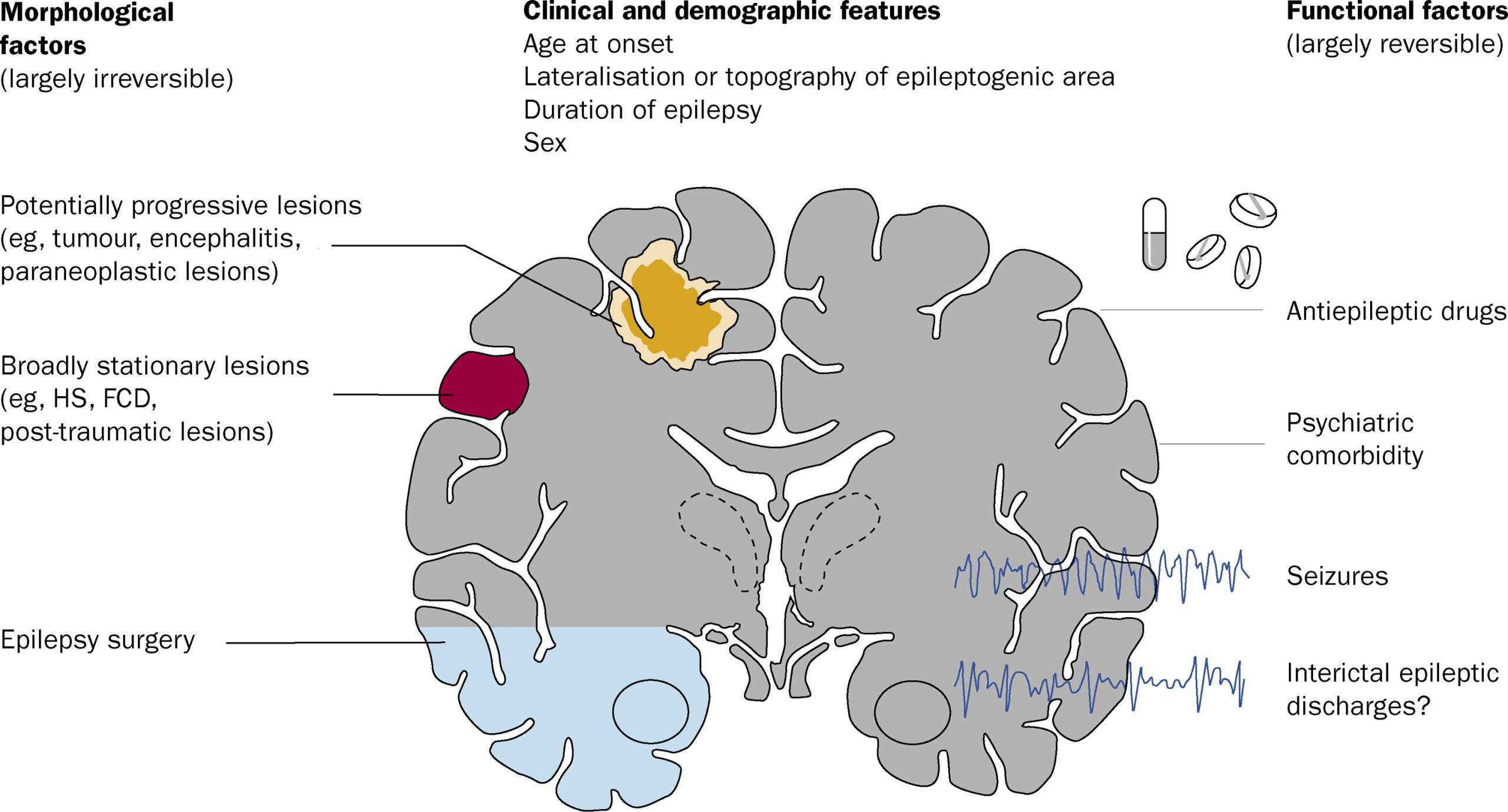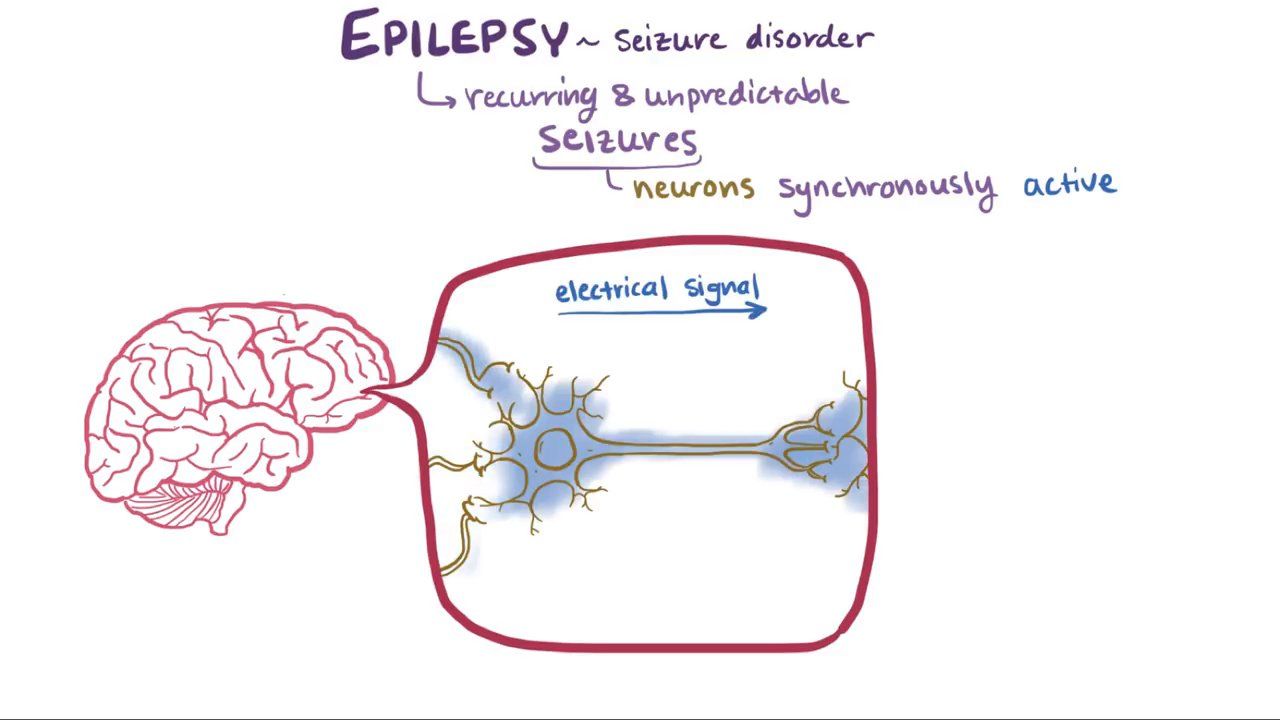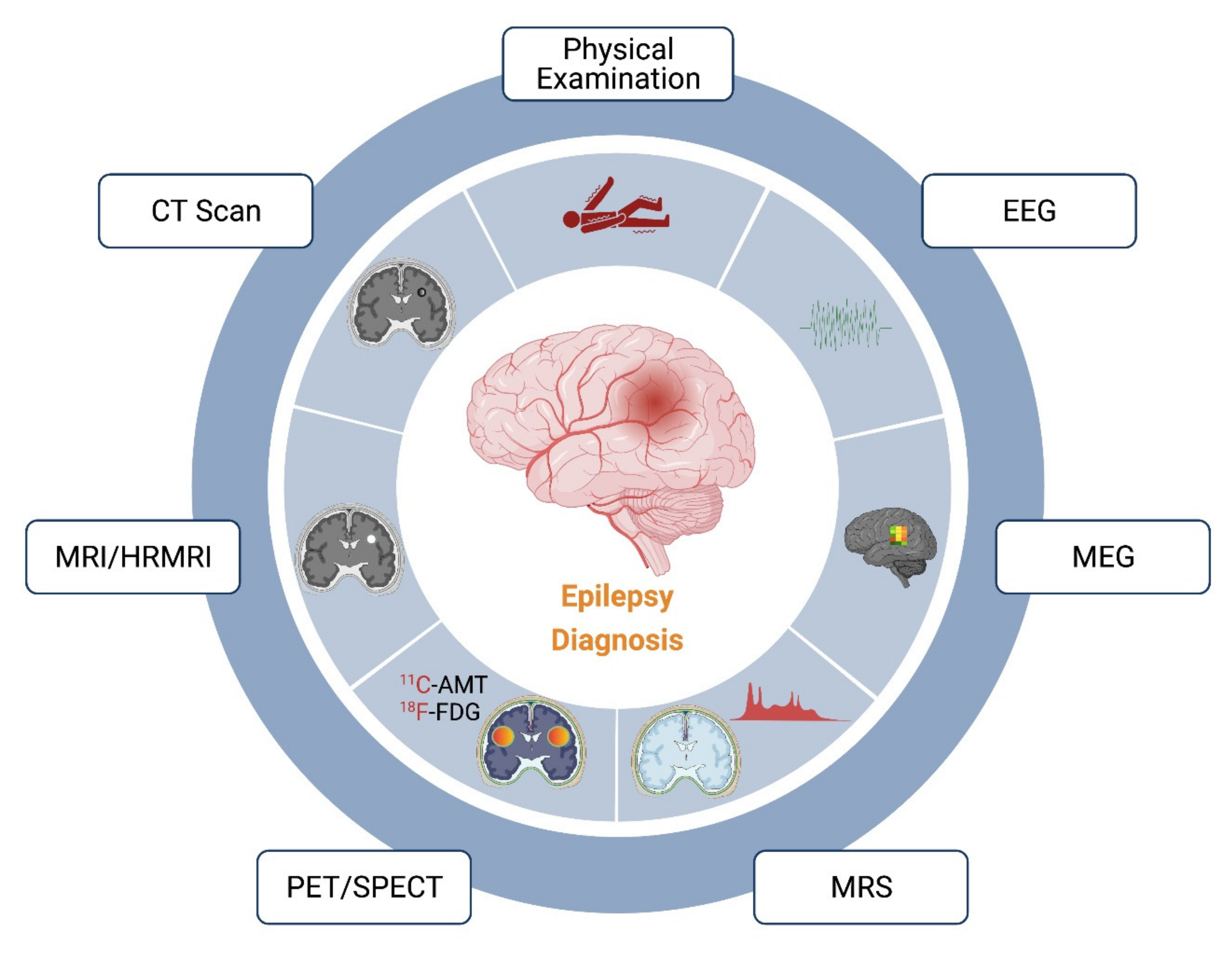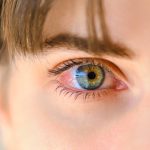
What is epilepsy?
Epilepsy is a long-term brain condition where a person has repeated seizures (fits). It is thought to affect about 3 in every 100 Australians.
Having just one seizure is not considered to be epilepsy — about half the people who have one seizure never have another seizure.
Epilepsy is not one single condition. There are a range of different conditions that can cause seizures.
Seizures usually last 1 to 3 minutes. If someone has a seizure that lasts for more than 5 minutes, call an ambulance on triple zero (000). If you see someone having a seizure, you can go to Epilepsy Action Australia’s seizure first aid resources.
What are the symptoms of epilepsy?
The symptom of epilepsy is seizures (fits). These are episodes of changed electrical activity in the brain and can vary a lot depending on the part of the brain involved.
Seizures can cause symptoms like loss of consciousness (passing out), unusual jerking movements (convulsions) as well as other unusual feelings, sensations and behaviours.
There are many different types of seizures. Generalised seizures involve the whole brain and so the whole body is affected. Focal seizures involve only part of the brain.
Generalised tonic-clonic seizures
Previously known as ‘grand mal seizures’, these types of seizures are the most well recognised. The seizure starts with a sudden loss of consciousness, the body then becomes stiff followed by jerking of the muscles. Turning red or blue, tongue-biting and loss of bladder control are common. Confusion, drowsiness, memory loss, headache and agitation can happen on regaining consciousness.
Absence seizures
Absence seizures were previously known as ‘petit mal seizures’, these types of seizures usually start in childhood, but can happen in adults. These seizures are brief and involve staring, loss of expression, unresponsiveness and stopping activity. Sometimes eye blinking or upward eye movements are seen. The person usually recovers straight away and continues their previous activity, without remembering the seizure.
Focal seizures
Previously known as ‘partial seizures’, start in one area of the brain and affect the parts of the body controlled by that area of the brain. The seizure may involve unusual movements, feelings, sensations, or behaviours. People can have different levels of consciousness during focal seizures.
Febrile convulsions
Febrile convulsions are common seizures that happen in about 3 in 100 healthy children up to 6 years old. The seizures are associated with an illness causing a fever, like a viral infection and are generally harmless.
This is usually dealt with by treating the seizure if necessary, and treating the cause of the fever.
Children who have febrile convulsions have a similar risk of developing epilepsy to most people, if they don’t have any other risk factors for epilepsy.
What causes epilepsy?
The cause of epilepsy is unknown in half of all cases. We know that genetics (family history) play an important role.
Seizures or epilepsy can also be caused by anything that damages the brain, like:
- head injury or trauma
- stroke or brain haemorrhage (bleed)
- brain infection or inflammation, like meningitis, encephalitis or a brain abscess
- brain malformations or tumours
- brain diseases, like Alzheimer’s disease
- chronic alcohol or drug use
- high or low blood sugar and other biochemical imbalances
But, seizures may not develop for years after the damage to the brain happens.
When should I see my doctor?
Always see a doctor if:
- this is your first seizure
- you have repeated seizures
- you have seizures more often than normal
- you’re not sure if you’ve had a seizure
You should seek medical attention after a seizure if you are injured or if you are pregnant or have diabetes.
How is epilepsy diagnosed?
A diagnosis of epilepsy is based on your history of seizures. Your doctor will ask you what you can remember and any symptoms you may have before the seizures happen, like feeling strange or any other warning signs.
It may be useful to talk with anyone who saw your seizure and ask them what they saw, especially if you can’t remember the seizure.
Your doctor may also do tests like blood tests, an EEG (electroencephalogram) and scans of the brain (like a CT scan or an MRI).
Even with normal findings on your EEG and brain scans, you may still have epilepsy. But, abnormal findings can help classifying the type of epilepsy involved.
If your child or someone you know has a seizure, it can be helpful to record it on your mobile phone. This can help your doctor make a more accurate diagnosis.
How is epilepsy treated?
Most people with epilepsy can control their seizures with antiepileptic medicines and by avoiding triggers. The type of medicines you need depends on things like how old you are and what types of seizures you are having. Many antiepileptic medicines need blood tests to make sure the levels of medicine in your blood are not too low or too high or cause other medical problems.
Some new treatments for epilepsy are being studied. These include:
- surgery on the area of the brain causing the seizures
- vagus nerve stimulation — nerves in the neck are stimulated by a device placed under the skin
- a strict medically supervised diet in some children with epilepsy, called a ketogenic diet
- medical cannabis, which has been shown in some studies to help people control seizures. You can read more about medicinal cannabis and epilepsy on the Epilepsy Action Australia website
You may also need different treatments depending on the underlying cause of your epilepsy.
Keeping a seizure diary can help you track how well your epilepsy is being managed and help you find your triggers. Your doctor may also help you develop an epilepsy management plan which can be useful by your school, employer, and other health professionals.
It’s important to work with your doctor to get the best control over your seizures, especially if you are planning on becoming pregnant.
Ask your doctor if it is safe for you to drive or do other high-risk activities like operating heavy machinery. Depending on the type of epilepsy they have, most people will be able to return to driving after being seizure-free for 6 months.
Can epilepsy be prevented?
You can help prevent seizures by taking your medication and avoiding triggers. Triggers often include:
- lack of sleep
- missed or too much antiepileptic medication
- physical and emotional stress
- hormonal changes due to menstruation (periods)
- fever
- alcohol or drug use
- flashing lights
- caffeine
- missing meals
- having an infection
- vomiting, diarrheoa or constipation
- allergies
- severe changes in temperature
Complications of epilepsy
Having epilepsy puts you at higher risk of injury. During a seizure you might fall, knock yourself, or breathe in food or saliva. You should avoid jobs using heavy machinery, working at heights or under water. You may also be stopped from driving if your seizures are not controlled. Precautions may be needed around water, like when swimming or bathing.
Children with epilepsy may find it harder to learn or to concentrate.
Epilepsy can affect your life and you will need to pay more attention to your health. You may feel anxious or depressed when you are first diagnosed. To read more about staying healthy and avoiding complications, visit the Epilepsy Action Australia website.
If you get pregnant, talk to your doctor about adjusting your medication.
